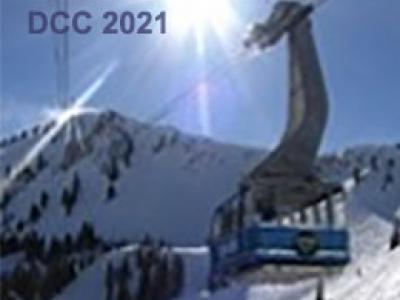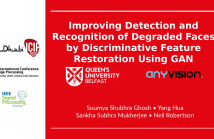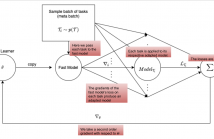
- Read more about Reducing Image Compression Artifacts for Deep Neural Networks
- Log in to post comments
Existing compression artifacts reduction methods aim to restore images on pixel-level, which can improves human visual experience. However, in many applications, large-scale images are collected not for visual examination by human. Instead, they are used for many high-level vision tasks usually by Deep Neural Networks (DNN). One fundamental problem here is whether existing artifacts reduction methods can help DNNs improve the performance of the high-level tasks. In this paper, we find that these methods have limited performance improvements to high-level tasks, even bring negative effects.
- Categories:
 35 Views
35 Views- Read more about HH-CompWordNet: Holistic Handwritten Word Recognition in the Compressed Domain
- Log in to post comments
Holistic word recognition in handwritten documents is an important research topic in the field of Document Image Analysis. For some applications, given strong language models, it can be more robust and computationally less expensive than character segmentation and recognition. This paper presents HH-CompWordNet, a novel approach to applying a Convolutional Neural Network (CNN) to directly to the DCT coefficients of the compressed domain word images.
- Categories:
 175 Views
175 Views
- Categories:
 39 Views
39 Views
- Read more about Segmenting Unseen Industrial Components In A Heavy Clutter Using RGB-D Fusion And Synthetic Data
- Log in to post comments
Segmentation of unseen industrial parts is essential for autonomous industrial systems. However, industrial components are texture-less, reflective, and often found in cluttered and unstructured environments with heavy occlusion, which makes it more challenging to deal with unseen objects. To tackle this problem, we present a synthetic data generation pipeline that randomizes textures via domain randomization to focus on the shape information.
- Categories:
 161 Views
161 Views
- Read more about DOES SUPER-RESOLUTION IMPROVE OCR PERFORMANCE IN THE REAL WORLD? A CASE STUDY ON IMAGES OF RECEIPTS
- Log in to post comments
Recently, many deep learning methods have been used to handle single image super-resolution (SISR) tasks and often achieve state-of-the-art performance. From a visual point of view, the results look convincing. Yet, does it mean that those techniques are reliable and robust enough to be implemented in real business cases to enhance the performance of other computer vision tasks?
- Categories:
 60 Views
60 Views
- Read more about Improving Detection and Recognition of Degraded Faces by Discriminative Feature Restoration Using GAN
- Log in to post comments
Face detection and recognition in the wild is currently one of the most interesting and challenging problems. Many algorithms with high performance have already been proposed and applied in real-world applications. However, the problem of detecting and recognising degraded faces from low-quality images and videos mostly remains unsolved. In this paper, we present an algorithm capable of recovering facial features from low-quality videos and images. The resulting output image boosts the performance of existing face detection and recognition algorithms.
- Categories:
 37 Views
37 Views
- Read more about FDFlowNet: Fast Optical Flow Estimation using a Deep Lightweight Network
- 2 comments
- Log in to post comments
FDFlowNet.pdf
- Categories:
 197 Views
197 Views
- Read more about Pose Guided Person Image Generation Based on Pose Skeleton Sequence and 3D Convolution
- Log in to post comments
- Categories:
 47 Views
47 Views
- Read more about Sparsity preserved canonical correlation analysis
- Log in to post comments
Canonical correlation analysis (CCA) describes the relationship between two sets of variables by finding linear combinations of the variables with maximal correlation. Recently, under the assumption that the leading canonical correlation directions are sparse, various procedures have been proposed for many high-dimensional applications to improve the interpretability of CCA. However all these procedures have the inconvenience of not preserving the sparsity among the retained leading canonical directions. To address this issue, a new sparse CCA method is proposed in this paper.
- Categories:
 33 Views
33 Views
- Read more about ICIP 2020 Paper #2783: FEW SHOT LEARNING FOR POINT CLOUD DATA USING MODEL AGNOSTIC META LEARNING
- Log in to post comments
The ability of deep neural networks to extract complex statistics and learn high level features from vast datasets is proven.Yet current deep learning approaches suffer from poor sample efficiency in stark contrast to human perception. Fewshot learning algorithms such as matching networks or ModelAgnostic Meta Learning (MAML) mitigate this problem, enabling fast learning with few examples. In this paper, we ex-tend the MAML algorithm to point cloud data using a Point-Net Architecture.
- Categories:
 225 Views
225 Views